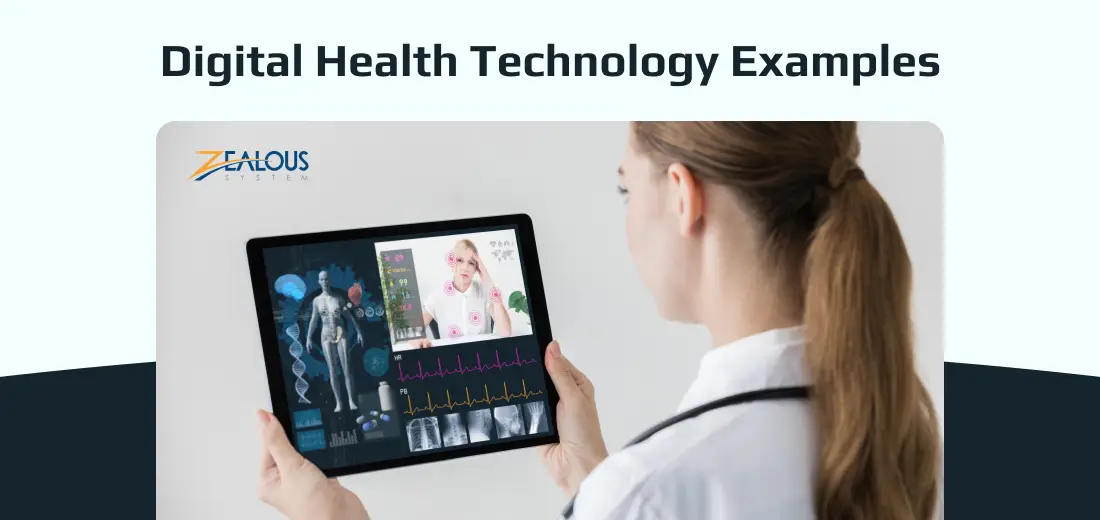
We use cookies and similar technologies that are necessary to operate the website. Additional cookies are used to perform analysis of website usage. please read our Privacy Policy
Digital Health Technology Examples in Australia: Revolutionizing Healthcare

Australia is at the forefront of leveraging digital health technologies, transforming the way healthcare is delivered and experienced for both patients and providers. From telehealth consultations to AI-powered diagnostics, these innovative solutions are making healthcare more accessible, efficient, and personalized.
Digital health technologies are transforming the way we access, manage, and deliver healthcare, offering innovative software solutions for patients, providers, and the entire healthcare system.
In recent years, Australia has witnessed a transformative wave in its healthcare sector, with digital health technology playing a pivotal role. These technological improvements have not only improved patient care but have also streamlined healthcare operations, making the system more efficient and accessible.
In this blog, we will explore some notable examples of digital health technology that have left a significant impact on Australia’s healthcare industry.
Top Digital Health Technology Examples in Australia
1. My Health Record:
One of the flagship initiatives in Australia’s digital health realm is the My Health Record system. This centralized electronic health record allows individuals to access and manage their health information securely online. It includes important medical details such as allergies, medications, and test results, enabling healthcare providers to deliver more informed and personalized care.
2. Telehealth Services:
The use of telehealth services has been a game-changer, especially in the vast Australian outback where accessing healthcare can be challenging. Telehealth allows patients to consult with healthcare professionals remotely, bridging geographical gaps and ensuring timely medical assistance. Video consultations, remote monitoring, and telemedicine apps have become instrumental in providing healthcare services to rural and remote communities.
3. Health Apps and Wearables:
A surge in health and wellness apps, coupled with the widespread adoption of wearable, has empowered individuals to take charge of their well-being. From fitness tracking apps to monitoring chronic conditions, these digital tools provide real-time data that can be shared with healthcare professionals. This trend has also spurred the growth of healthcare app development companies in Australia, catering to the increasing demand for innovative digital solutions in the healthcare sector.
4. Clinical Decision Support Systems:
Clinical decision support systems (CDSS) leverage artificial intelligence to assist healthcare providers in making well-informed decisions about patient care. In Australia, CDSS is increasingly being integrated into electronic health records to analyze patient data, recommend diagnostics, and suggest treatment plans. This not only enhances accuracy in diagnoses but also contributes to more efficient healthcare delivery.
5. E-prescriptions:
The traditional paper prescription system is undergoing a digital transformation with the introduction of electronic prescriptions (e-prescriptions). This allows healthcare professionals to send prescriptions directly to a patient’s chosen pharmacy electronically. It streamlines the prescription process, reduces the risk of errors, and enhances convenience for both patients and healthcare providers.
6. Health Information Exchange (HIE):
Health Information Exchange facilitates the seamless sharing of patient information among different healthcare organizations. In Australia, projects like the Personally Controlled Electronic Health Record (PCEHR) and the Health Data Portal have been pivotal in creating interoperability between healthcare systems. This interconnectedness improves care coordination, reduces duplication of tests, and enhances overall healthcare outcomes.
7. AI-powered Diagnostics and Medical Imaging:
Artificial intelligence is making significant strides in diagnostics and medical imaging in Australia. AI algorithms analyze medical images, such as X-rays and MRIs, with remarkable accuracy, aiding healthcare professionals in early and precise detection of diseases.
8. Remote Patient Monitoring:
Remote patient monitoring solutions have gained prominence, allowing healthcare providers to track patients’ vital signs and health metrics in real-time. This technology enables proactive intervention, reducing hospital readmissions and providing patients with the convenience of staying in their homes while receiving continuous care.
Conclusion
Digital health technology is reshaping the healthcare industry in Australia, bringing about positive changes in patient care, accessibility, and efficiency. The examples highlighted in this blog showcase the diverse ways in which technology is being harnessed to create a more connected and patient-centric healthcare system. This trend has also sparked the emergence of software development companies in Australia, playing a crucial role in the ongoing evolution of innovative solutions that contribute to the improvement of public health on a national scale.
We are here
Our team is always eager to know what you are looking for. Drop them a Hi!
Pranjal Mehta
Pranjal Mehta is the Managing Director of Zealous System, a leading software solutions provider. Having 10+ years of experience and clientele across the globe, he is always curious to stay ahead in the market by inculcating latest technologies and trends in Zealous.
Table of Contents
×

Comments